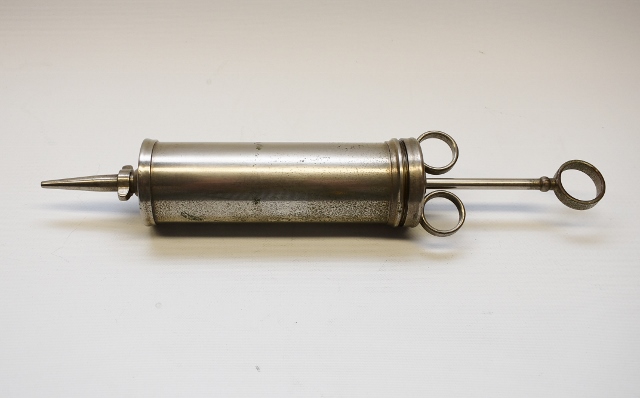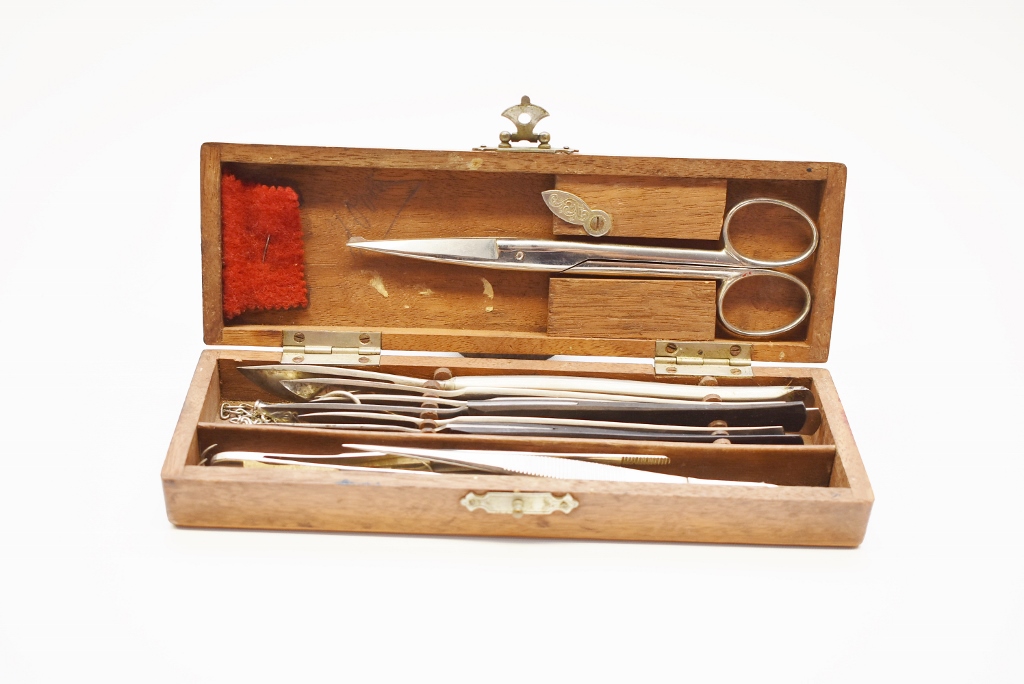As connoisseurs of vintage and antique timepieces, we celebrate the intricate beauty of historical craftsmanship and the stories embedded within each piece we encounter. So, as part of our expanding interest in history’s treasures, we find ourselves drawn towards the fascinating world of antique medical instruments.

It might seem surprising, the parallels between horology – the study and measurement of time, and early medicine. Yet, just like our beloved clocks and barometers, antique medical instruments offer a captivating insight into our ancestors’ technological prowess and determination to unravel the mysteries of life.
The proliferation of both medical instruments and timekeeping devices saw its height during the period of Enlightenment in the 18th century. This era was characterized by a surge in scientific discovery and invention. Not only did we see advancements in horology, such as the marine chronometer by John Harrison, but the medical world also experienced significant leaps forward with the introduction of more refined and purposeful tools.

An intriguing instrument to consider is the sphygmograph, invented by German physician Karl von Vierordt in 1854. This device, a predecessor to today’s blood pressure monitor, recorded the pulse waveform and essentially allowed doctors to ‘track time’ through the human circulatory system. With intricate dials and recording apparatus, it demonstrated a fusion of horological and medical ingenuity. It reminds us that, just as time is fundamental to life, so it is to medicine.
Like the sphygmograph, the stethoscope is a fascinating antique medical tool. It’s a familiar tool even in modern medicine and has a rich history. The first stethoscope, invented by French physician René Laennec in 1816, was a simple wooden tube, quite different from the flexible, binaural design we see today. The evolution of the stethoscope mirrors the advancement in timekeeping, with both fields striving for greater precision and ease of use. The idea of ‘listening’ became pivotal in both sectors; physicians to the body’s rhythms and horologists to the ‘heartbeat’ of a timepiece.
Finally, we turn our gaze to the formidable surgical kits of the 19th century. These kits, complete with an array of specialized tools for various procedures, displayed a level of craftsmanship that mirrors the delicacy and precision found in horology. The intricate design and functionality of scalpels, bone saws, and trephines are reminiscent of the careful calibration of gears in a clock or the delicate adjustment of a barometer.
Just as each clock and barometer tells a story of its era, each antique medical instrument carries with it tales of innovation, determination, and a quest for understanding. They serve as reminders of humanity’s ceaseless drive to conquer time and disease, against the odds.
In conclusion, while antique medical instruments may at first glance seem far removed from our passion for clocks and barometers, they embody the same spirit of inventiveness and precision. Each piece, whether designed to measure time or to save a life, is a testament to the beauty of human curiosity and craftsmanship. It’s a story we are thrilled to explore, and we invite you to join us on this fascinating journey. After all, both the tick of a clock and the beat of a heart are rhythms that have guided us throughout history.
